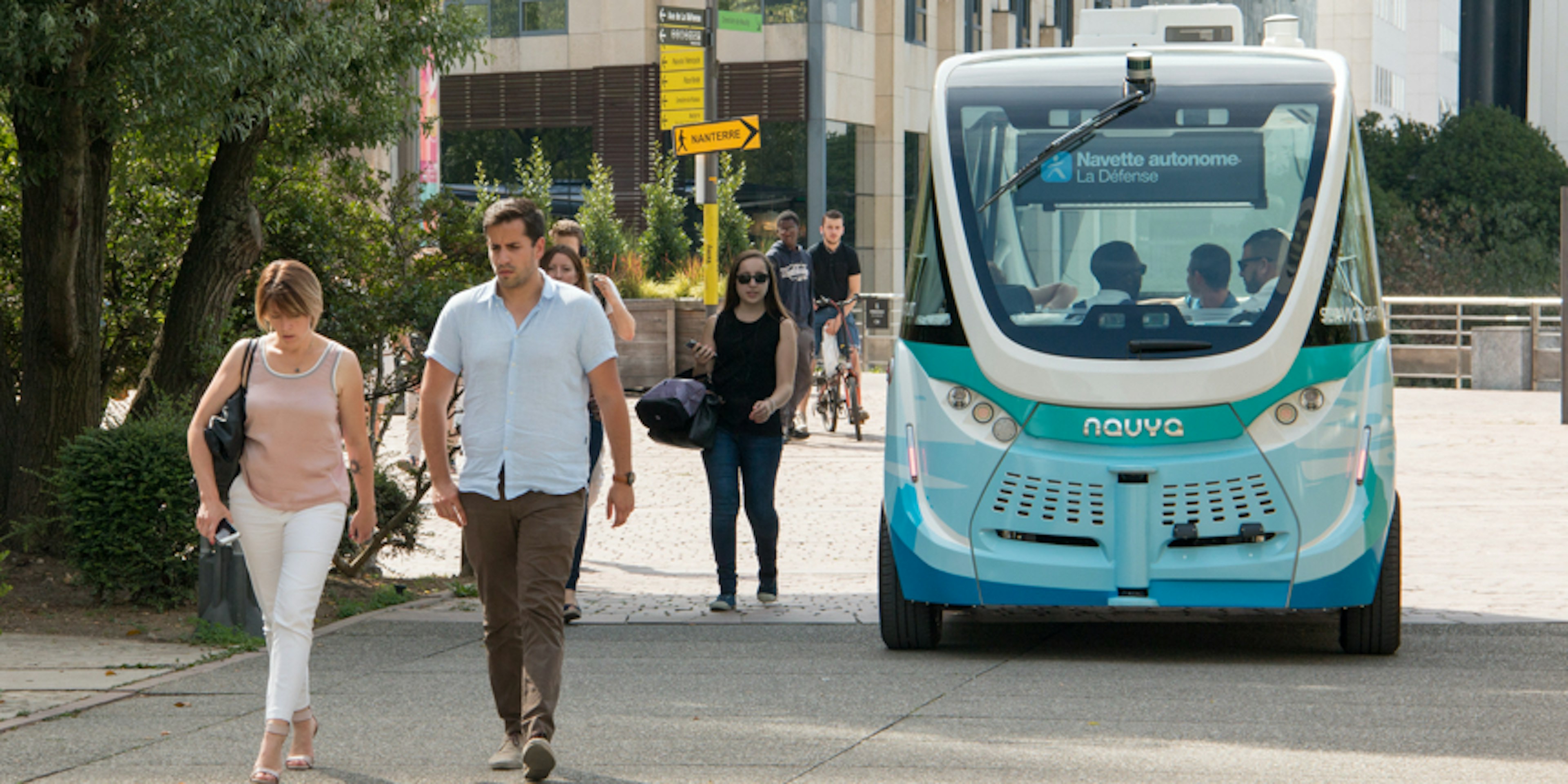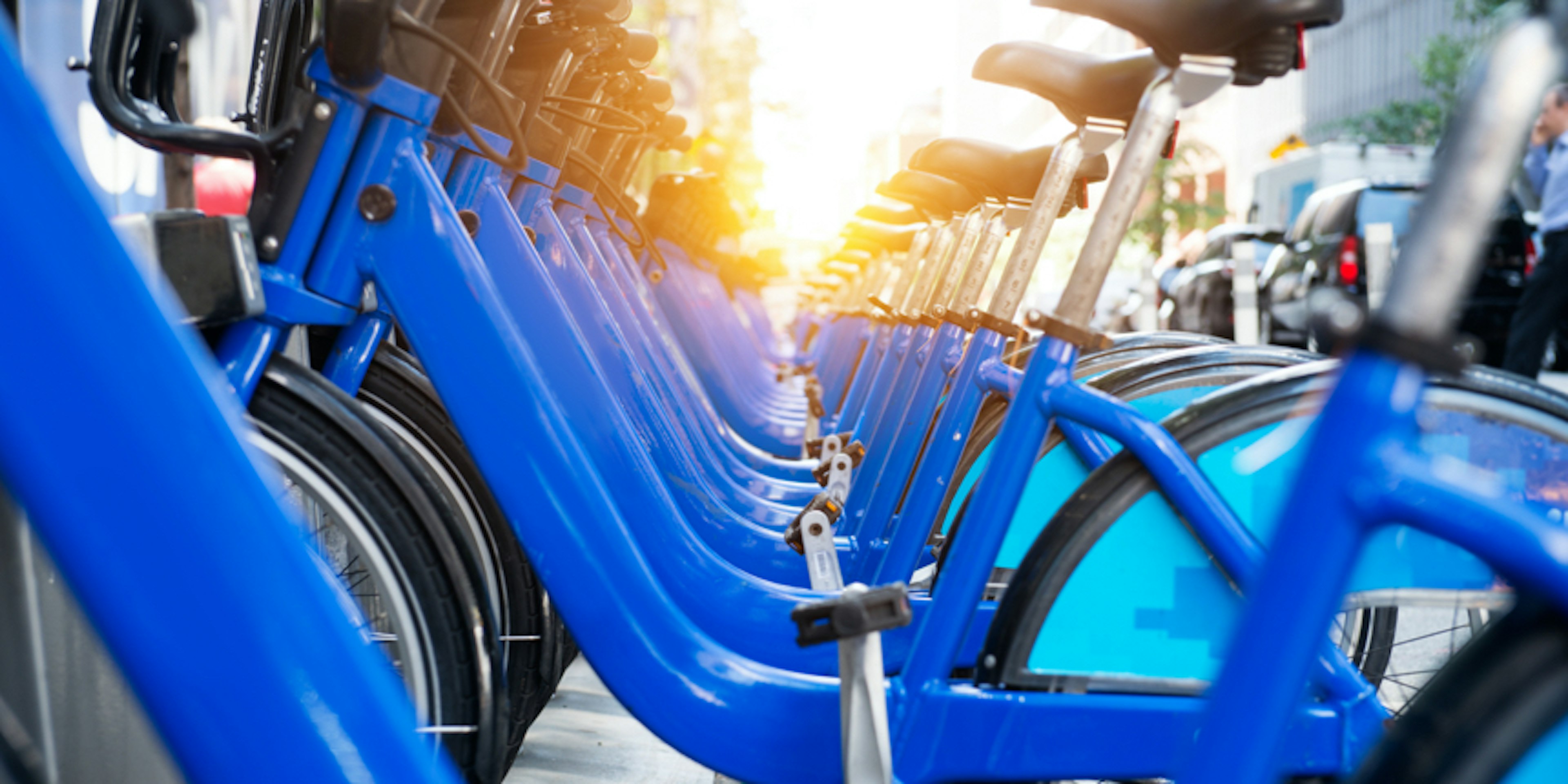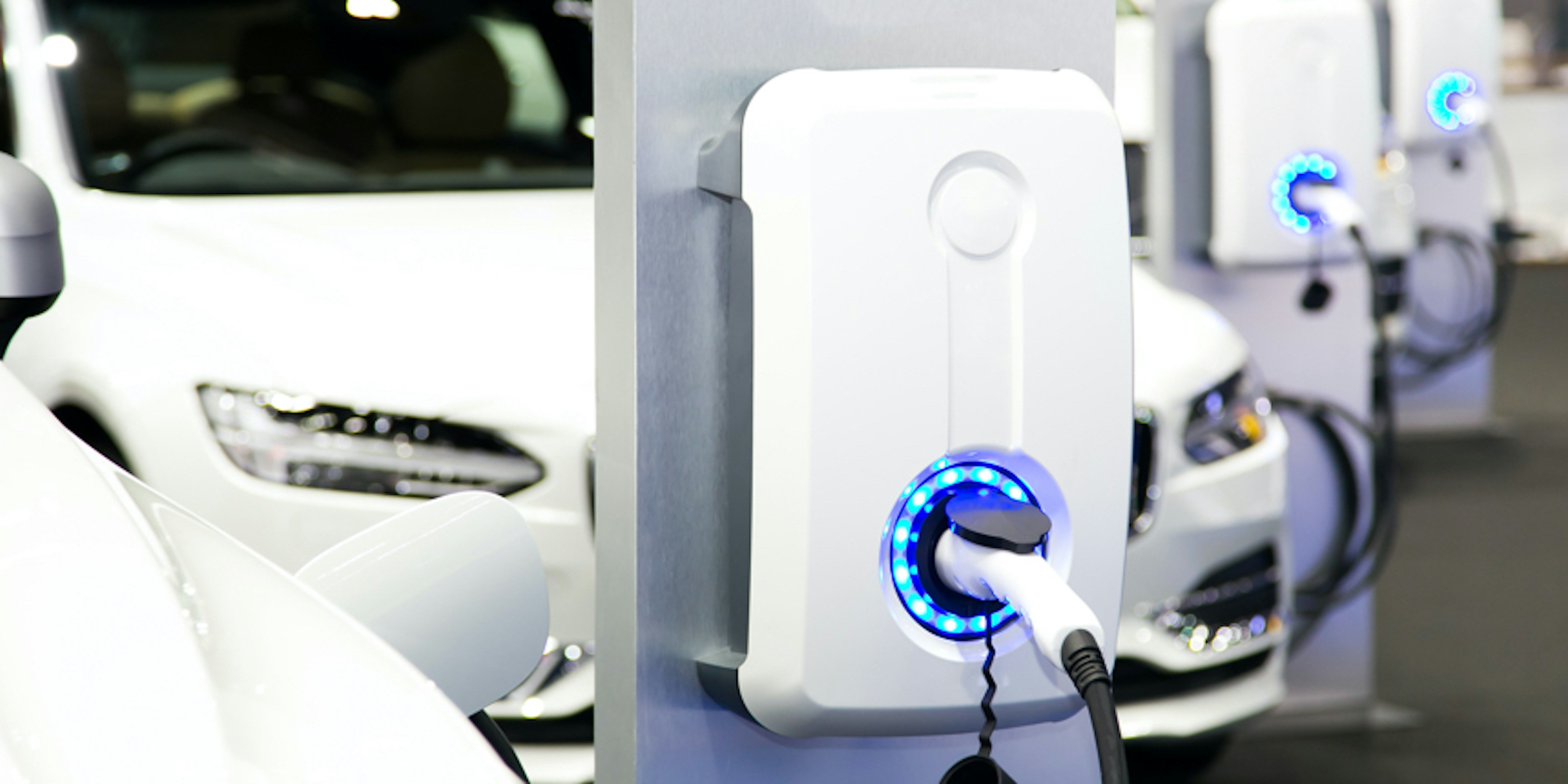We waste a lot of time in traffic. Workers in Los Angeles and Sydney — some of the most congested cities on earth — spend the equivalent of seven working weeks commuting a year. That’s an extreme example. For the average driver, a combined 4 months of their entire lives is spent at red lights.
And it’s not just time that’s wasted in traffic, it’s money. A car’s routine maintenance costs are close to $1,200 a year. Vehicles with an internal combustion engine (ICE vehicles) have oil changes, engine maintenance and fuel to pay for, which accounts for high costs, especially for cars that aren’t brand new and need continuous attention.
But smart cities — urban areas that embrace technology and connected Internet of Things (IoT) infrastructure — have a number of transportation technologies that will combat these issues. Smart city technology in transportation will be a game changer that could cut time wasted idling in traffic and maintenance and fuel costs altogether. Here are some smart city transportation innovations that we can expect to see in the next few years.
Autonomy in smart city transportation
Experts predict that the world is likely moving away from vehicle ownership and toward transportation as a service (Taas) — like ride-hailing apps such as Uber or fleets of shared bikes and e-scooters. As vehicle ownership dwindles, a need for shared vehicles, like buses and shuttles, may increase, especially in larger urban areas.
In walkable cities, where many can get around on public transportation, these buses and shuttles are prime for low-level autonomy testing. The National Association of City Transportation Officials (NACTO) recently published a plan of the opportunity that comes with high adoption of shared autonomous shuttles in cities. In it, they call out specific policies cities should implement for a seamless transition to city-wide self-driving buses and shuttles — highlighting the immense opportunity that’s just over the horizon.
There are typically five levels of autonomy that go into implementing autonomous vehicles in a city. The city of Columbus — which won the U.S. Department of Transportation's first-ever Smart City Challenge — knows these levels well. Zach McGuire, Smart Columbus Electric Vehicle and Smart Mobility Adoption Manager, helped implement a city-wide autonomous shuttle at a level 3, which includes a vehicle operator:
“[The operator] makes sure everything is running smoothly. These types of pilots will get us closer to level 5 autonomy.”
But even if there was a unanimous acceptance of fully autonomous vehicles, there are still several more barriers to adopting smart transportation.
Barriers to smart city transportation adoption
Wealth disparities
The most advanced, newest technology is, as expected, expensive. Uber air plans to start a premium service for business people and the average owner of a Tesla earns $143K a year. Many of the top technologies will be out of price range for a long time for the average American. And in big cities where the gap between rich and poor are vast, turning a city “smart” may be leaving some of the most vulnerable populations behind.
Smart Columbus took some measures to combat this by launching their second autonomous vehicle pilot program in a historically low-income residential community. The free shuttle, called the Linden Leap, carried up to 12 passengers and reached areas that the community buses did not. The shuttle included sensors, cameras and GPS technology to ensure the vehicle followed the route and avoided obstacles, and typically traveled around just 12 MPH.
Many other big cities have plans in place for people living below the poverty line. For shared fleets of shared e-scooters and bikes, a number of towns offer subscriptions at significantly discounted rates and the option to pay with cash. Addressing these barriers in wealth disparity will help increase customer adoption and acceptance of smart city transportation technology.
Safety concerns with self-driving vehicles
There is a lot of hesitance around getting into a self-driving car. If you asked the average American right now to board an autonomous bus to their favorite hangout spot, there’d probably be quite a bit of fear and apprehension to ride alone without any safety net. In a 2019 survey, 84 percent of respondents reported being wary of getting into an autonomous passenger car without a human driver present and without the ability to take control.
However, getting into an autonomous shuttle with several others and an emergency operator on board, as Smart Columbus did, seems a little less daunting. Well over 20,000 people have ridden in the vehicle to date, McGuire said.
Behavior changes
Safety concerns go hand in hand with consumer unwillingness to change ingrained transportation-related behavior. That change is even more difficult to achieve than rallying for policy adjustments, McGuire said:
“When we talk about getting to work and travel without an active driver… there are policy barriers, but behavior is even harder to change than policy. It takes so much more education & awareness for people to change the way they get to work.”
While this is partly about concerns for safety, it’s largely about the unwillingness to change an ingrained mindset and daily routine. If everyone suddenly had their own autonomous vehicle, they lose a sense of ownership and control. It would be such a major, unprecedented shift in behavior, that widespread adoption is likely to take time.
Potential outcomes of smart city transportation adoption
Reduced traffic congestion
Intelligent transportation systems, which would be widely used in any contemporary smart city in the world, pulls together a number of tools that enable users to make safer, more coordinated and smarter use of transport networks. It aims to achieve traffic efficiency through four components:
- Traffic data collection - Uses GPS and road cameras to collect real-time data.
- Data transmission - This data informs management about traffic conditions where they can analyze it.
- Traffic data analysis - The data is clarified and customized.
- Traveler information - Management makes this data available to citizens via apps, radio, web, text messages, and more. This allows citizens to plan their route for the day without hassle.
Positive environmental impact
A large sum of pollution could be combated by carpooling. Today, more than 76 percent of Americans drive to work alone while only 9 percent report carpooling with someone else. Especially when so many people commute from suburbs to the same place, this is a seemingly unnecessary form of pollution. As expected, those behavioral changes are tricky to shake, but McGuire said Smart Columbus is trying. Since Ohio currently has an 82 percent single occupancy commuting rate, their goal is to reduce these trips by 10 percent.
“We want safer, more efficient ways to move around the region. We are driving the adoption of shared mobility which would reduce the amount of single occupancy trips...We work with employers to determine where employees live & what their preferences are. Once we have that data we work with them to identify the best way to commute. The Columbus Zoo, for example, has offered an incentive for employees to purchase a bike so that they can bike to work.”
Increase in city safety
Critical for first responders, speed is everything in an emergency situation. Smart systems can optimize call centers and signal to traffic lights to make way for a clear driving path for ambulances. It’s predicted that these types of applications could slash emergency response times by 20 to 35 percent.
And when deploying a range of applications to their maximum effect, deaths from homicide, road traffic and fire are estimated to be cut by 8 to 10 percent. That means in a high-crime city with 5 million people, smart applications could save 300 lives a year. It could also lower assault, burglary, and auto theft by 30 to 40 percent.
Takeaways for fleet managers
The more society experiences the ebb and flow of technology, the more likely it will be that fleet managers may need to make major adjustments. Here are two adjustments managers can prepare for:
-
A shift to a mobility role. Big cities are prime for testing smart technology, and with that will come a range of TaaS options for customers. Fleet managers would be well-positioned to rethink their role into offering customer support for getting from point A to point B, whether that be in the form of micromobility, rideshare, or an autonomous shuttle.
-
A demand for more electric vehicles. Country wide, there are more and more fleets converting to electric, and it will only expand in smart cities in the world. The city of Columbus recently purchased 200 EVs to add to their city fleets, said McGuire. “The time to electrify vehicles is now, not the future,” he said. “We are doing that at Smart Columbus.”
Skills covered in the class
Mobility-Mindset
Fleet Electrification
Data-Driven Decision Making
Operational Efficiency
Did you enjoy this class?
Share it with your organization and colleagues.
Sign up for our newsletter for the latest information about the fleet industry.
Sign up for our newsletter for the latest information about the fleet industry.



